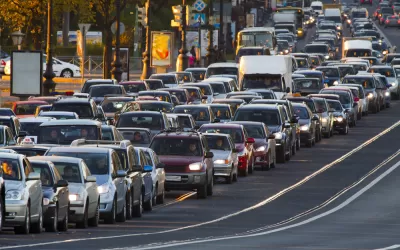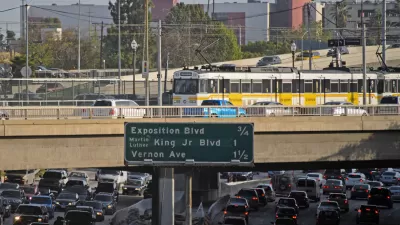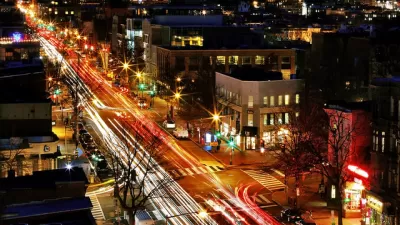Charging based on demand and for access is commonplace—except on roads.

"Riding the Metro at peak time, splurging on an additional fee to avoid the lunch line, receiving a discount for seeing a movie when few others choose to—we accept congestion pricing as a normal feature of everyday life," writes DJ Gribbin. So why, he wonders, is congestion pricing on roads consistently met with such resistance?
The time, economic, and environmental benefits of such strategies are clear, says Gribbin. And a variety of mechanisms exist for implementing congestion pricing, including managed lanes, high-occupancy vehicle lanes, and cordon pricing.
But a lack of action at the state and federal levels means cities have to step up to put congestion pricing into place on roadways. Gribbin points to the cordon pricing coming to New York City in 2021, a plan expected to generate $1.1 billion a year for transit service improvements. Washington, D.C., Chicago, and Los Angeles are also exploring congestion pricing options. "If all goes well, commuters in these three cities will have the ability to recover some of the 70 to 120 hours lost to congestion every year while reducing their environmental impact," he adds.
FULL STORY: Congestion pricing is all around us. Why is it taboo on our roads?

Planetizen Federal Action Tracker
A weekly monitor of how Trump’s orders and actions are impacting planners and planning in America.

Chicago’s Ghost Rails
Just beneath the surface of the modern city lie the remnants of its expansive early 20th-century streetcar system.

San Antonio and Austin are Fusing Into one Massive Megaregion
The region spanning the two central Texas cities is growing fast, posing challenges for local infrastructure and water supplies.

Since Zion's Shuttles Went Electric “The Smog is Gone”
Visitors to Zion National Park can enjoy the canyon via the nation’s first fully electric park shuttle system.

Trump Distributing DOT Safety Funds at 1/10 Rate of Biden
Funds for Safe Streets and other transportation safety and equity programs are being held up by administrative reviews and conflicts with the Trump administration’s priorities.

German Cities Subsidize Taxis for Women Amid Wave of Violence
Free or low-cost taxi rides can help women navigate cities more safely, but critics say the programs don't address the root causes of violence against women.
Urban Design for Planners 1: Software Tools
This six-course series explores essential urban design concepts using open source software and equips planners with the tools they need to participate fully in the urban design process.
Planning for Universal Design
Learn the tools for implementing Universal Design in planning regulations.
planning NEXT
Appalachian Highlands Housing Partners
Mpact (founded as Rail~Volution)
City of Camden Redevelopment Agency
City of Astoria
City of Portland
City of Laramie





























